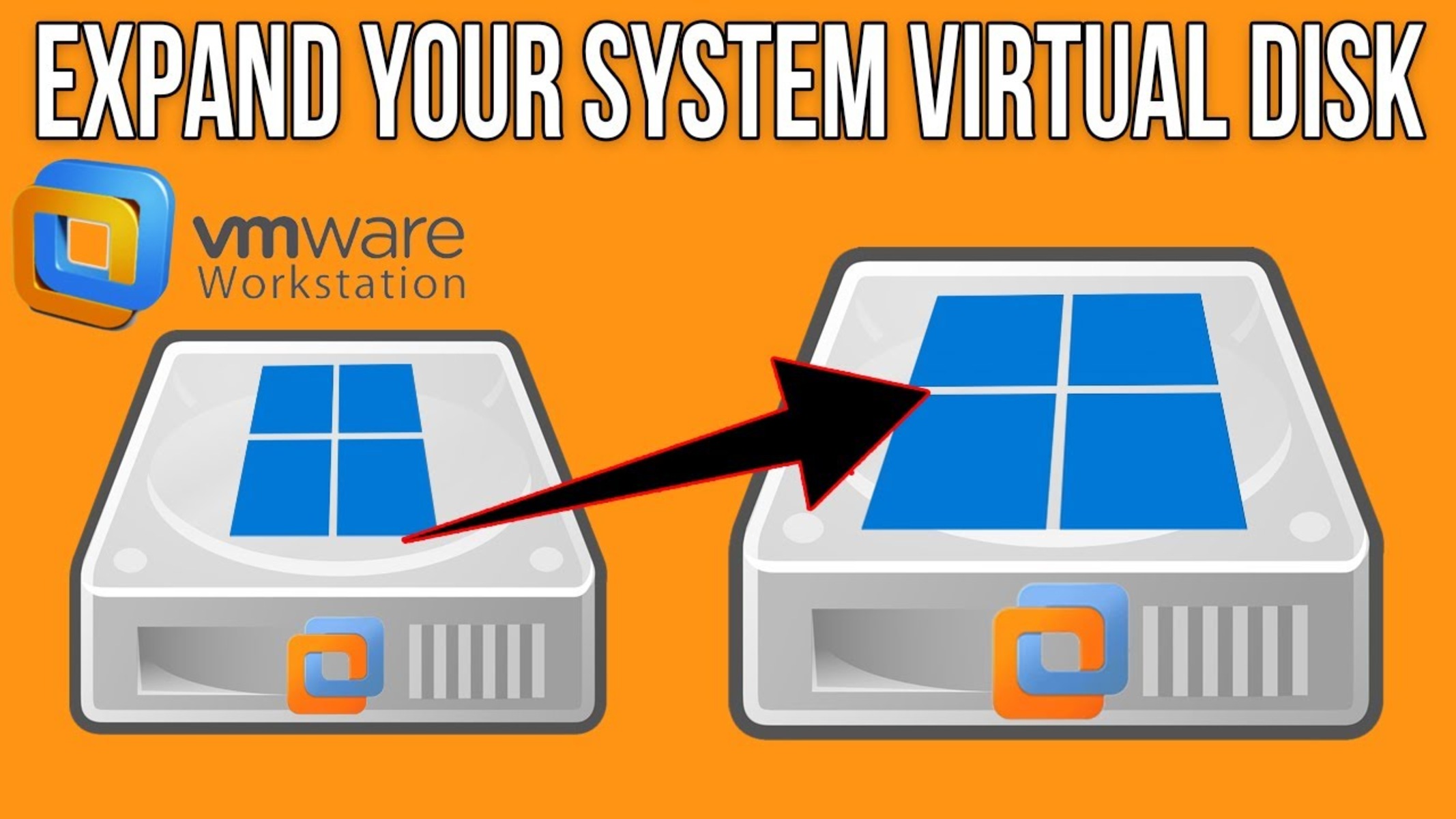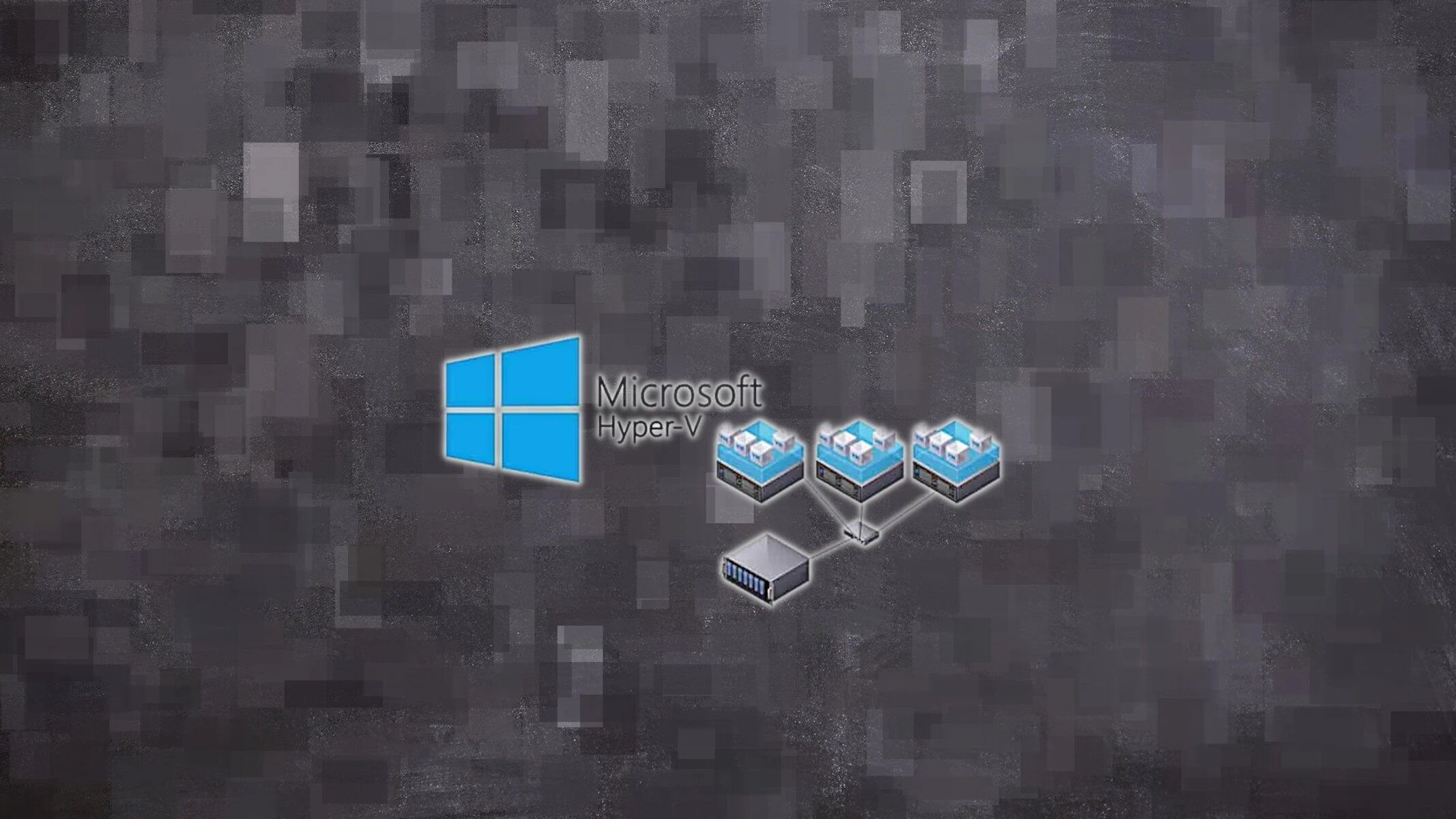Introduction
Running out of disk space on your VMware virtual machine can be a frustrating experience. It can lead to performance issues, system crashes, or an inability to install or save essential files. Fortunately, increasing the disk space on a VMware virtual machine is a straightforward process that can help alleviate these problems and ensure smooth operation.
In this guide, we will walk you through the step-by-step process of increasing disk space on a VMware virtual machine. Whether you are a seasoned IT professional or a beginner, this tutorial will provide you with the necessary knowledge and instructions to expand the storage capacity of your virtual machine effortlessly.
Before we dive into the steps, it’s important to note that this guide assumes you already have a VMware virtual machine set up and running. Additionally, you should have administrative access to make changes to the virtual machine’s settings and configuration.
Having ample disk space is crucial for efficient functioning of a virtual machine. It allows you to install software, store data, and run applications without limitations. By increasing the disk space, you can ensure that your virtual machine has enough room to accommodate your growing needs.
Now that we have set the stage, let’s move on to the next section, where we will go over the prerequisites for expanding the disk space on a VMware virtual machine.
Prerequisites
Before we begin the process of increasing disk space on your VMware virtual machine, there are a few prerequisites that you need to be aware of. Ensuring that you have met these requirements will help streamline the procedure and prevent any potential issues.
1. Administrative access: You must have administrative access to the VMware virtual machine on which you wish to increase the disk space. This level of access is necessary to make the required changes to the virtual machine’s settings and configuration.
2. Available disk space: Make sure that there is unallocated disk space on the datastore where the virtual machine resides. This additional space will be used to expand the disk and accommodate the increased storage capacity.
3. Backup: It is always recommended to take a backup of your virtual machine before making any modifications to the disk space. This serves as a safety net in case something goes wrong during the process.
4. Shutdown the virtual machine: To avoid any data corruption or loss, it is important to shut down the virtual machine before proceeding with the disk expansion. This ensures that no files are in use and can be safely modified.
5. VMware tools installed: Ensure that VMware Tools is installed on the virtual machine. VMware Tools provides drivers and utilities for improved performance and functionality. It is recommended to have the latest version installed to support the disk expansion process.
By fulfilling these prerequisites, you will be well-prepared to proceed with increasing the disk space on your VMware virtual machine. With everything in place, you can now move on to the next section, where we will explore the step-by-step process of checking the disk space usage.
Step 1: Check Disk Space Usage
Before you start increasing the disk space on your VMware virtual machine, it is essential to assess the current disk space usage. This step will help you understand how much additional space you need to allocate and ensure that you optimize the available storage effectively.
To check the disk space usage, follow these steps:
- Open the VMware vSphere Client or VMware Workstation, depending on which platform you are using to manage your virtual machines.
- Select the virtual machine for which you want to check the disk space usage.
- Go to the “Summary” tab, which provides an overview of the virtual machine’s details.
- Under the “Resources” section, locate the “Datastore” field. It displays the datastore where the virtual machine’s files are stored.
- Write down the name of the datastore as you will need it in subsequent steps.
- Next, navigate to the “Configuration” tab and select “Hard Disk” from the hardware list.
- Make note of the current provisioned size, which represents the total capacity of the virtual disk.
- Below the provisioned size, you will find the “Used” and “Free” disk space, indicating the current utilization of the virtual disk.
By checking the disk space usage, you can determine how much additional space is required to meet your needs. This information will guide you in allocating the appropriate amount of disk space during the disk expansion process.
Now that you have assessed the disk space usage on your VMware virtual machine, you are ready to proceed to the next step, where we will learn how to increase the virtual disk size.
Step 2: Increase the Virtual Disk Size
After checking the disk space usage of your VMware virtual machine, the next step is to increase the size of the virtual disk. This process involves modifying the virtual machine’s settings to accommodate the additional storage capacity.
To increase the virtual disk size, follow these steps:
- Ensure that the virtual machine is powered off. This is a crucial step to avoid any data corruption or loss during the disk expansion process.
- Access the VMware vSphere Client or VMware Workstation, depending on your platform of choice.
- Select the virtual machine for which you want to increase the disk space.
- Go to the “Summary” tab and click on “Edit Settings.”
- In the “Virtual Hardware” tab, navigate to the “Hard Disk” section and select the virtual disk you wish to expand.
- Click on the “Properties” button.
- In the “Capacity” field, enter the desired size for the virtual disk. Ensure that the value entered is larger than the current provisioned size and meets your storage requirements.
- Click “OK” to save the changes.
Once you have increased the virtual disk size, you are ready to proceed with rescanning the disk to recognize the additional capacity. In the next step, we will explore how to perform this operation to ensure the virtual machine accurately reflects the expanded disk size.
Step 3: Rescan the Disk
Once you have increased the size of the virtual disk in your VMware virtual machine, the next step is to rescan the disk to recognize the newly allocated space. This process ensures that the virtual machine can effectively utilize the expanded storage capacity.
To rescan the disk, follow these steps:
- Power on the virtual machine that you have modified the disk size for.
- Once the virtual machine has booted up, log in to the operating system.
- If you are running a Windows operating system, open the “Computer Management” console by right-clicking on the “My Computer” or “This PC” icon and selecting “Manage.” For Linux-based systems, open a terminal window.
- In the “Computer Management” console or terminal, navigate to the disk management section.
- Initiate a rescan for new disk devices or changes to the existing devices. In Windows, you can do this by right-clicking on the disk management console and selecting “Rescan Disks.” For Linux, use the appropriate command to rescan the disks (e.g., `echo 1 > /sys/class/block/sdX/device/rescan`).
- Wait for the disk rescan process to complete. This may take a few moments depending on the system and the size of the disk.
- Once the rescan is finished, the operating system should recognize the newly expanded disk space as unallocated.
By rescanning the disk, you ensure that the operating system is aware of the increased storage capacity and can make use of the additional space for storing files and data. Once the rescan is complete, you can proceed to the next step, where we will explore how to expand the partition to utilize the expanded disk space effectively.
Step 4: Expand the Partition
After successfully rescanning the disk and making the operating system recognize the newly allocated space, the next step is to expand the partition to utilize the increased disk space effectively. This process involves adjusting the partition boundaries to encompass the additional storage capacity.
To expand the partition, follow these steps:
- Open the “Computer Management” console on Windows or use the appropriate partition management tool for Linux-based systems.
- In the disk management section, locate the partition that corresponds to the virtual disk you expanded.
- Right-click on the partition and select the option to expand or resize it.
- Follow the prompts or instructions provided by the partition management tool to adjust the partition boundaries.
- Specify the new size for the partition, ensuring that it encompasses the additional space.
- Confirm the changes and wait for the partition resizing process to complete.
- Once the partition expansion is finished, the operating system will be able to utilize the expanded disk space within the partition.
Expanding the partition ensures that the operating system can effectively store and retrieve data from the newly allocated space. It allows for seamless integration of the expanded disk space into the existing file system structure.
With the partition expanded, we can now move on to the next step, where we will explore how to extend the file system to make use of the additional storage capacity within the partition.
Step 5: Extend the File System
After expanding the partition to accommodate the increased disk space on your VMware virtual machine, the next step is to extend the file system. Extending the file system allows you to utilize the additional storage capacity within the partition for storing files and data.
To extend the file system, follow these steps:
- Open the “Computer Management” console on Windows or use the appropriate file system management tool for Linux-based systems.
- Navigate to the disk management section and locate the partition that corresponds to the expanded virtual disk.
- Right-click on the partition and select the option to extend or resize the file system.
- Follow the prompts or instructions provided by the file system management tool to extend the file system within the partition.
- Specify the maximum available space or the desired size for the file system extension.
- Confirm the changes and wait for the file system extension process to complete.
- Once the file system extension is finished, the operating system will be able to utilize the additional storage capacity within the partition for storing files and data.
Extending the file system ensures that your VMware virtual machine can make full use of the expanded disk space within the partition. With the file system extended, you will have the necessary space to store files, install applications, and run your system smoothly.
Now that the file system has been extended, we can proceed to the next step, where we will verify the disk space increase to ensure that the expansion process was successful.
Step 6: Verify the Disk Space Increase
Now that you have completed the previous steps to increase the disk space on your VMware virtual machine, it is important to verify that the disk space increase has been successful. Verifying the expanded disk space ensures that the virtual machine is now using the additional storage capacity as expected.
To verify the disk space increase, follow these steps:
- Power on the VMware virtual machine that you have expanded the disk space for.
- Once the virtual machine has booted up, log in to the operating system.
- Open the file explorer or a disk usage monitoring tool, such as “Disk Management” on Windows or “df” command on Linux.
- Navigate to the disk or partition that you expanded and check the available disk space.
- Verify that the available disk space has increased and matches the size you allocated during the disk expansion process.
- You can also create a test file or copy existing files to the expanded disk space to confirm their successful storage on the increased storage capacity.
By verifying the disk space increase, you ensure that the VMware virtual machine is now utilizing the expanded storage capacity as intended. This step helps confirm that the disk expansion process was successful and that the virtual machine is ready to handle your growing storage needs.
Congratulations! You have successfully increased the disk space on your VMware virtual machine. You can now enjoy the additional storage capacity to install applications, store files, and run your system smoothly without the fear of running out of space.
In this guide, we have covered the step-by-step process of increasing disk space on a VMware virtual machine. From checking disk space usage to expanding partitions and extending file systems, you now have the knowledge and tools to effectively manage the storage capacity of your virtual machine.
Remember, keeping a sufficient amount of disk space is essential for the efficient functioning of your VMware virtual machine. Regularly monitoring disk usage and expanding as needed will ensure smooth operation and prevent storage-related issues.
Thank you for following this guide, and best of luck in your VMware virtual machine management!
Conclusion
Increasing disk space on a VMware virtual machine is a crucial step to ensure optimal performance and efficiency. By following the step-by-step process outlined in this guide, you can effectively expand the disk capacity of your virtual machine and accommodate your growing storage needs.
Throughout this guide, we covered essential steps such as checking disk space usage, increasing the virtual disk size, rescanning the disk, expanding the partition, extending the file system, and verifying the disk space increase. By carefully following these steps, you can successfully expand the storage capacity of your virtual machine without encountering any data loss or performance issues.
It is important to note that before making any changes to your virtual machine, it is essential to have administrative access, sufficient disk space, and a backup of your data. These precautions will ensure a smooth and risk-free process of increasing disk space.
Regularly monitoring disk space usage and expanding as necessary will help you prevent storage bottlenecks, system crashes, or limitations in installing or saving essential files. By efficiently managing disk space, you can optimize the performance and functionality of your VMware virtual machine.
Being proactive in managing disk space will contribute to the overall productivity and longevity of your virtual machine. As your storage requirements continue to grow, following these steps will allow you to seamlessly adapt and expand your virtual machine’s disk capacity.
Thank you for following this guide. We hope that it has equipped you with the knowledge and tools necessary to increase disk space on your VMware virtual machine. By ensuring ample storage, you can enjoy a smooth and hassle-free virtual machine experience.
Remember to regularly monitor and manage your disk space to avoid running into storage-related issues. With a well-maintained and expanded disk space, your virtual machine will continue to operate efficiently and cater to your expanding needs.
Happy virtual machine management!

























